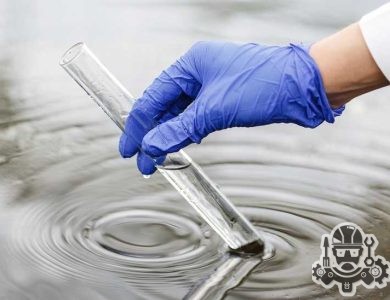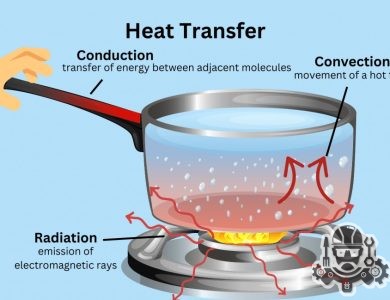Boosting Energy Efficiency with Heat Recovery Systems
Discover the efficient and innovative technology of heat recovery systems and units. Explore their applications, calculations, ventilation, and high-efficiency results.
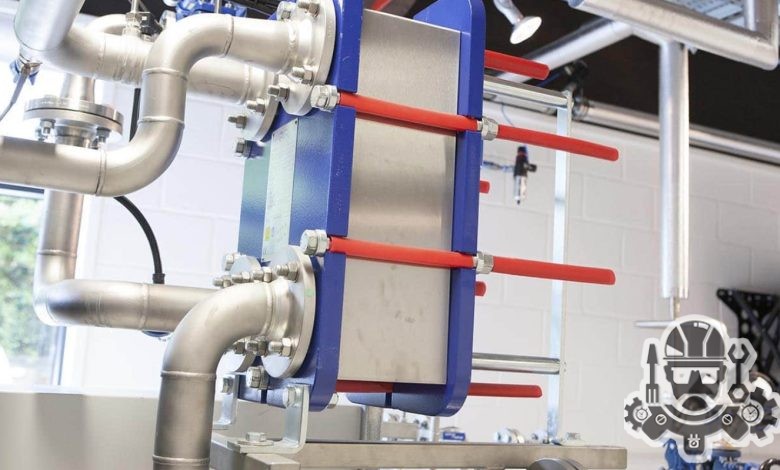
Heat recovery systems have emerged as a vital component in today’s energy-conscious world. As the demand for energy continues to rise, the need for efficient and sustainable solutions becomes increasingly critical. This article delves into the concept of heat recovery systems, their mechanics, applications, and the environmental benefits they offer.
The Science behind Heat Recovery:
Heat recovery systems are designed to capture waste heat generated during various industrial processes and utilize it for other purposes. This waste heat, which would typically be expelled into the atmosphere, is instead captured and recycled, resulting in significant energy savings. The science behind these systems lies in the principle of thermodynamics, specifically the conservation of energy.
Working Principles:
Heat recovery systems employ various techniques to recover and reuse waste heat. One common method is through the installation of heat exchangers. These devices transfer heat energy from one fluid to another, such as extracting heat from the exhaust gases of an industrial furnace to preheat incoming combustion air.
Another approach is combined heat and power (CHP) systems, also known as cogeneration. In a CHP system, electricity is generated while simultaneously capturing waste heat from the power generation process. This recovered heat can then be used for water heating, space heating, or other industrial processes.
Applications of Heat Recovery Systems:
Heat recovery systems find applications in diverse industries, including manufacturing, power generation, and commercial buildings. In manufacturing, where large amounts of heat are generated during production processes, heat recovery systems can significantly reduce energy consumption and mitigate environmental impact.
In power generation, heat recovery systems are typically integrated into gas turbines, steam turbines, or diesel engines. By effectively utilizing the heat that would otherwise be wasted, these systems improve overall energy efficiency and reduce greenhouse gas emissions.
Benefits and Environmental Impact:
One of the primary benefits of heat recovery systems is their capacity to significantly reduce energy consumption. By reusing waste heat, these systems can achieve energy savings of up to 30% or more, contributing to substantial cost savings for industries and businesses.
Furthermore, heat recovery systems offer environmental advantages by decreasing the reliance on fossil fuels and diminishing greenhouse gas emissions. The recovered heat displaces the need for additional energy sources, thereby reducing the overall carbon footprint associated with energy production.
Conclusion:
In conclusion, heat recovery systems are an innovative and efficient solution for conserving energy and promoting sustainability. Through their ability to capture and reuse waste heat, these systems offer substantial energy savings and environmental benefits. Integrating heat recovery systems into various industries and applications is a crucial step towards a more sustainable future.
Contents
Heat Recovery Unit
Heat Recovery Process
The heat recovery process involves capturing wasted heat from a source, such as the exhaust gases from a furnace, boiler, or process equipment. The captured heat is then transferred to a heat exchanger, where it is used to preheat a fluid or air stream that would otherwise require additional energy to reach the desired temperature.
Advantages of Heat Recovery Units
Heat recovery units offer numerous advantages, both economically and environmentally. One of the significant benefits is energy efficiency. By recovering and reusing waste heat, the overall energy consumption of a system or process can be significantly reduced. This leads to cost savings, as less energy is required from primary sources.
Furthermore, the use of HRUs helps to decrease greenhouse gas emissions. Since less energy is needed to maintain optimal operating conditions, the burning of fossil fuels is minimized, resulting in lower carbon dioxide (CO2) emissions. Heat recovery units contribute to sustainable development by promoting resource conservation and minimizing environmental impact.
Types of Heat Recovery Units
There are several types of heat recovery units that are commonly used in various industries. One of the most common types is the air-to-air heat exchanger. This unit recovers heat from the exhaust air and transfers it to the incoming fresh air, thus reducing the energy required to heat or cool the fresh air. It is particularly useful in buildings with high ventilation requirements, such as offices, schools, and hospitals.
Another type is the water-to-water heat exchanger, which utilizes waste heat to preheat water. This preheated water can be used for various applications, including domestic hot water, process heating, and space heating. Water-to-water heat recovery units are commonly employed in industrial settings, where large quantities of hot water are required.
There are also heat recovery units designed specifically for different industries, such as the exhaust gas heat exchanger that recovers heat from flue gases in power plants or the condensing economizer that captures waste heat from boiler exhaust gases. These specialized units are tailored to the specific requirements and characteristics of the industry they serve.
Challenges and Future Trends
Although heat recovery units offer significant benefits, there are challenges to their widespread adoption. One challenge is the initial cost of installation, which can be relatively high. However, the long-term energy savings and reduced operating costs often justify this initial investment.
Another challenge is the compatibility of heat recovery units with existing systems. Retrofitting an existing system to incorporate a HRU requires careful planning and consideration to ensure proper integration and optimal performance. Additionally, maintenance and monitoring are crucial to ensure the continuous and efficient operation of the HRU.
In terms of future trends, there is a growing focus on the development of more advanced heat recovery technologies. Efforts are being made to improve heat exchanger efficiency, enhance system controls, and explore innovative applications of waste heat recovery. Additionally, the integration of heat recovery units with renewable energy sources, such as solar thermal systems, is becoming increasingly popular.
Conclusion
Heat recovery units play a vital role in energy conservation and sustainability. By capturing waste heat and repurposing it for useful applications, these devices contribute to the reduction of energy consumption and greenhouse gas emissions. Despite the challenges that exist, the development and implementation of heat recovery units continue to progress, paving the way for a more energy-efficient future.
Heat Recovery Efficiency
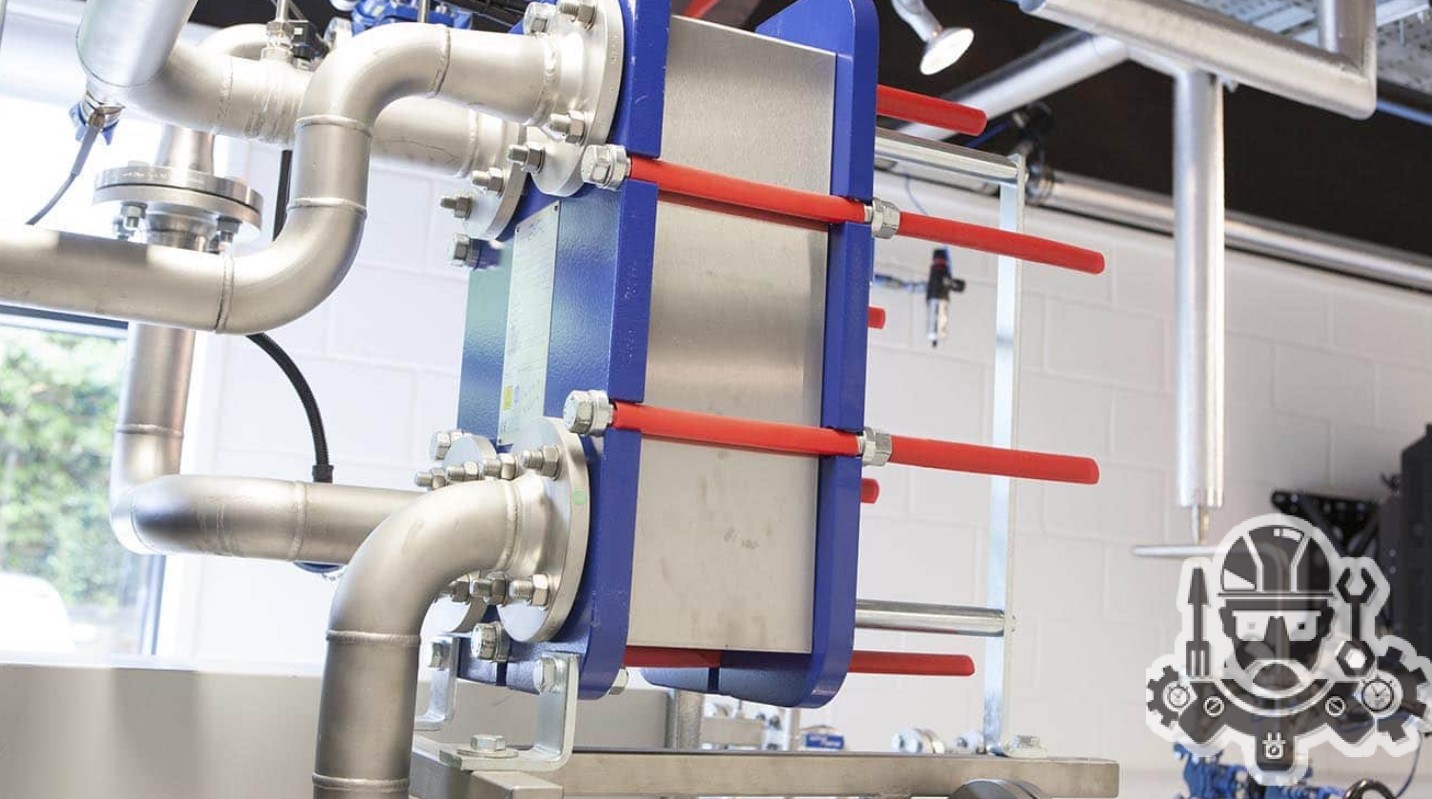
Heat recovery is a process in which waste heat is captured and reused, instead of being released into the atmosphere. It involves the extraction of heat from sources such as industrial processes, power generation, and even domestic activities like showering and cooking. The recovered heat can then be utilized for a variety of purposes, including space heating, hot water production, or even generating electricity.
The efficiency of a heat recovery system is a critical factor in determining its effectiveness in reducing energy consumption. Heat recovery efficiency is defined as the ratio of the recovered heat to the total heat available in the system. It is usually expressed as a percentage and represents how effectively the heat recovery system is able to capture and utilize waste heat.
A higher heat recovery efficiency indicates a more efficient system, as it means that a larger proportion of the waste heat is being recovered and reused. This not only reduces the energy consumption and environmental impact but also leads to cost savings for the user.
| Parameter | Value |
| Total Heat Available | 1000 kW |
| Recovered Heat | 800 kW |
| Heat Recovery Efficiency | 80% |
In the table above, we can see an example of a heat recovery system. The total heat available in the system is 1000 kW, and 800 kW of that heat is successfully recovered. Therefore, the heat recovery efficiency is calculated as 800 kW / 1000 kW = 0.8 or 80%.
The heat recovery efficiency of a system depends on various factors. One of the crucial factors is the design and selection of heat exchangers. Heat exchangers are devices that facilitate the transfer of heat between two fluids without allowing them to mix. They play a vital role in maximizing the heat recovery efficiency by ensuring efficient heat transfer.
Another important aspect of heat recovery efficiency is the temperature difference between the waste heat source and the medium that receives the recovered heat. The larger the temperature difference, the higher the potential for heat recovery and thus, a higher heat recovery efficiency.
It is also worth mentioning that regular maintenance and proper operation of the heat recovery system are crucial for maintaining its efficiency. Over time, heat exchangers can become fouled or damaged, leading to a decrease in heat recovery efficiency. Therefore, it is essential to perform routine inspections and clean the heat exchangers if necessary.
In conclusion, heat recovery systems offer an effective solution for reducing energy consumption and mitigating environmental impacts. The heat recovery efficiency is a crucial parameter that determines the effectiveness of these systems. By maximizing the heat recovery efficiency through proper design, selection of heat exchangers, and regular maintenance, industries and households can achieve significant energy savings and contribute to a more sustainable future.
Heat Recovery Ventilation
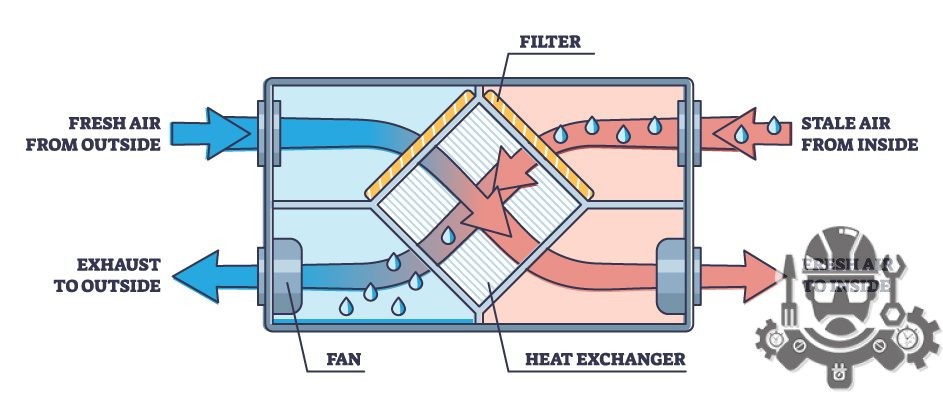
Indoor air quality plays a crucial role in maintaining a healthy and comfortable living environment. With the growing concern about energy efficiency and the need to reduce heating and cooling costs in buildings, heat recovery ventilation (HRV) systems have emerged as a scientifically proven solution to enhance indoor air quality while minimizing energy consumption.
HRV is a mechanical ventilation system that optimizes the exchange of stale indoor air with fresh outdoor air, while simultaneously recovering and transferring the heat energy between the two streams. This exchange process significantly reduces the energy required to condition the incoming air, making it an ideal solution for energy-efficient building designs.
1. The Science behind Heat Recovery Ventilation
Heat recovery ventilation operates based on the principle of thermal energy transfer. The system typically consists of two separate ventilation streams – one for the incoming fresh air and another for the outgoing stale air. These streams flow through a heat exchanger where the heat energy from the outgoing air is transferred to the incoming air. This energy exchange ensures that the fresh air is pre-conditioned, which minimizes its cooling or heating requirements before being circulated within the building.
2. The Environmental Benefits of HRV
HRV systems offer numerous environmental benefits. By improving indoor air quality, these systems enable occupants to breathe cleaner and healthier air, reducing the risk of respiratory diseases and allergies. Additionally, HRV systems help to regulate humidity levels, preventing the growth of mold and mildew, which can deteriorate indoor air quality and lead to structural damage. Furthermore, by minimizing the energy required for heating and cooling, HRV systems contribute to reducing greenhouse gas emissions and promoting sustainable building practices.
3. The Energy Efficiency of HRV
One of the key advantages of HRV systems is their ability to recover and reuse the heat energy from the outgoing air. By doing so, the systems significantly reduce the need for additional heating or cooling of the incoming air. This energy recovery process can yield energy savings of up to 80%, making HRV a highly efficient ventilation solution for various building types, including residential, commercial, and institutional structures.
4. Installation and Maintenance Considerations
To ensure the effectiveness and longevity of an HRV system, proper installation and regular maintenance are essential. The system should be correctly sized to meet the specific ventilation requirements of the building and installed by trained professionals. Additionally, regular filter cleaning or replacement is necessary to prevent the accumulation of dust and contaminants, ensuring continued optimal performance and air quality improvement.
5. Conclusion
Heat recovery ventilation systems provide an effective and energy-efficient solution for enhancing indoor air quality. By utilizing the principles of thermal energy transfer, HRV systems minimize energy consumption while ensuring the supply of fresh, pre-conditioned air. The scientific approach underlying HRV makes it an integral component of sustainable building practices, promoting healthier environments and reducing the environmental footprint of modern structures.
Overall, the adoption of heat recovery ventilation systems is a critical step towards achieving optimal indoor air quality and sustainable living spaces.
Heat Recovery Calculations
Heat recovery calculations are a fundamental aspect of many industries and engineering applications, aiming to enhance energy efficiency and reduce overall energy consumption. These calculations involve determining the amount of heat that can be recovered from various sources and evaluating its potential for reuse or conversion into other forms of energy.
In order to effectively perform heat recovery calculations, several factors must be considered, including the nature of the heat source, the temperature difference between the source and the target application, and the overall thermal efficiency of the system. Additionally, the specific requirements and constraints of the application need to be taken into account.
One common method used in heat recovery calculations is the determination of the heat transfer coefficient (U-value) between the heat source and the target application. This coefficient reflects the rate at which heat can be transferred from one medium to another, considering factors such as the nature of the fluids involved, the surface area of the heat exchanger, and the temperature difference.
The heat recovery potential can then be calculated using the formula:
Heat Recovery Potential = Mass Flow Rate × Specific Heat Capacity × Temperature Difference × Heat Transfer Coefficient
This formula allows engineers to estimate the amount of heat that can be recovered from a given source and provide valuable insight into the feasibility and effectiveness of heat recovery systems.
Another critical aspect of heat recovery calculations is the evaluation of heat recovery efficiency. Heat recovery efficiency measures the effectiveness of the heat recovery system in capturing and reusing heat energy. It is calculated by dividing the actual amount of heat recovered by the maximum amount of heat that could potentially be recovered.
Heat Recovery Efficiency = Actual Heat Recovered / Maximum Heat Recovery Potential
High heat recovery efficiency indicates a well-designed and optimized heat recovery system, while low efficiency values may suggest the need for system improvements or adjustments.
Various heat recovery technologies exist, each with its own potential and limitations. Some common heat recovery systems include heat exchangers, heat pumps, and cogeneration systems. Heat exchangers, for example, utilize the principle of transferring heat from one fluid to another through a heat exchange interface. This technique can efficiently recover significant amounts of heat in applications where heat is readily available.
Heat pumps, on the other hand, use mechanical or electrical energy to transfer heat from a low-temperature source to a higher-temperature destination. This process allows for the recovery of heat from low-temperature sources that may otherwise be wasted.
Cogeneration systems, also known as combined heat and power (CHP) systems, simultaneously generate electricity and useful heat from a single primary energy source. These systems have the potential to achieve high energy efficiency levels by maximizing the utilization of both electrical and thermal energy.
In conclusion, heat recovery calculations are crucial in evaluating the potential for reusing or converting waste heat into useful energy. By considering factors such as heat transfer coefficients, heat recovery potential, and heat recovery efficiency, engineers can design and optimize heat recovery systems to achieve significant energy savings. The application of various heat recovery technologies further expands the possibilities for energy-efficient operations across industries, contributing to a more sustainable future.
Heat Recovery Technology
One of the key applications of heat recovery technology is in industrial processes, where large amounts of heat energy are generated and often wasted. By implementing heat exchangers and other heat recovery systems, a considerable portion of this wasted heat can be captured and utilized for other purposes, such as preheating incoming feed streams or generating steam for additional processes. This not only helps to reduce the overall energy consumption but also saves costs associated with energy procurement.
Another important application of heat recovery technology is in heating, ventilation, and air conditioning (HVAC) systems. Heat recovery ventilation (HRV) and energy recovery ventilation (ERV) systems are designed to extract the heat from exhaust air and transfer it to the incoming fresh air, therefore reducing the load on the heating or cooling system. These systems not only improve indoor air quality but also significantly reduce energy consumption in buildings.
The efficiency of heat recovery technology depends on various factors such as the temperature difference between the heat source and the heat sink, the type of heat exchanger used, and the flow rate of the fluids involved. Different types of heat exchangers, including shell and tube, plate, and fin-and-tube exchangers, are employed based on specific requirements and constraints of the application.
| Heat Recovery Technology | Application | Benefits |
| Industrial Processes | Recovering waste heat for preheating feed streams and generating steam | Energy savings, cost reduction |
| HVAC Systems | Extracting heat from exhaust air to reduce load on heating or cooling systems | Improved indoor air quality, energy efficiency |
Furthermore, heat recovery technology can also be applied in combined heat and power (CHP) systems, where both electricity and useful heat are generated concurrently from a single fuel source. The waste heat produced during electricity generation can be recovered and used for various heating applications, further increasing the overall efficiency of the system.
Heat recovery technology offers numerous benefits when integrated into various applications. First and foremost, it reduces the dependency on primary energy sources and reduces greenhouse gas emissions. By utilizing the waste heat that would otherwise be lost, it contributes to a more sustainable and eco-friendly operation. Additionally, it provides significant energy and cost savings by offsetting the need for additional energy procurement.
In conclusion, heat recovery technology plays a vital role in enhancing energy efficiency and reducing environmental impact. It finds applications in industrial processes, HVAC systems, and combined heat and power systems. By capturing and utilizing wasted heat energy, this technology helps in conserving resources, reducing costs, and mitigating climate change. Its wide range of benefits makes it a promising solution for a more sustainable future.
Heat Recovery Applications
Heat recovery refers to the process of capturing and reusing waste heat produced by industrial processes or equipment. It involves the utilization of heat that would otherwise be discarded into the environment, resulting in significant energy and cost savings. Heat recovery applications have gained extensive interest in various industries due to their potential to reduce greenhouse gas emissions and improve energy efficiency.
Application areas
There are several key areas where heat recovery has proven to be beneficial:
1. Industrial Processes: Many industrial processes involve the release of high temperatures. Heat recovery can be implemented to capture and reuse this excess heat in other parts of the process or for heating purposes. Industries such as iron and steel, cement, and glass manufacturing greatly benefit from heat recovery systems.
2. Power Generation: Heat recovery is extensively used in power plants and other energy conversion systems. Waste heat from the exhaust gases of gas turbines, internal combustion engines, or steam power plants can be recovered and utilized to generate electricity or for preheating the feedwater.
3. HVAC Systems: Heating, ventilation, and air conditioning (HVAC) systems often generate waste heat. Heat recovery can be incorporated into these systems to preheat or cool the air supply, reducing the energy required to heat or cool the incoming air and improving overall efficiency.
4. District Heating: Heat recovery is also employed in district heating systems, where waste heat from one building or process is used to provide heating for nearby buildings. This improves energy efficiency on a larger scale and reduces the overall environmental impact.
5. Refrigeration and Cooling: Heat recovery can be utilized in refrigeration and cooling processes. Waste heat generated during cooling can be harnessed for other heating purposes, such as domestic hot water production or space heating, thereby reducing the need for additional energy consumption.
Benefits and Challenges
The implementation of heat recovery systems offers numerous benefits:
1. Energy Efficiency: Heat recovery reduces the demand for primary energy sources by reusing waste heat. This results in increased energy efficiency and reduced greenhouse gas emissions.
2. Cost Savings: By utilizing waste heat instead of using additional energy for heating or cooling, significant cost savings can be achieved in industrial processes and HVAC systems.
3. Environmental Impact: Heat recovery applications contribute to environmental sustainability by reducing the overall carbon footprint of industries and buildings.
However, there are also challenges associated with implementing heat recovery applications:
1. Technical Complexity: Heat recovery systems can be complex to design and implement, requiring careful consideration of heat transfer mediums, system integration, and control mechanisms.
2. Economic Viability: The cost of implementing heat recovery systems and the time required to achieve a return on investment can be significant, making the economic viability of such projects crucial.
3. System Compatibility: Compatibility issues may arise when integrating heat recovery systems into existing equipment or processes, requiring modifications or retrofits to ensure seamless operation.
The Future of Heat Recovery Applications
The adoption of heat recovery applications is expected to continue increasing as industries and governments recognize the importance of energy efficiency and environmental sustainability. Technological advancements, such as improved heat exchangers and efficient heat transfer mediums, are further enhancing the feasibility and effectiveness of heat recovery systems.
Conclusion
Heat recovery applications have emerged as a promising solution to reduce energy consumption, cut costs, and minimize environmental impact. From industrial processes to power generation and HVAC systems, heat recovery offers various opportunities for capturing and reusing waste heat effectively. However, to fully harness the benefits of heat recovery, careful planning, technical expertise, and economic viability assessments are required.
A heat recovery system is a technology that allows the capture and reuse of waste heat generated from various industrial processes or building systems, increasing energy efficiency and reducing energy costs.
A heat recovery unit, also known as a heat exchanger, is the main component of a heat recovery system. It facilitates the transfer of heat between a hot process fluid and another fluid, such as air or water, to recover and reuse the energy contained in the waste heat.
Heat recovery efficiency refers to the effectiveness of a heat recovery system in capturing and reusing waste heat. It is calculated by comparing the amount of heat recovered to the total heat generated by the system, expressed as a percentage.
Heat recovery technology is widely used in various industries and sectors. It can be found in HVAC systems for buildings, industrial processes, power generation, wastewater treatment plants, and even in vehicles such as hybrid cars.
Heat recovery calculations involve determining the amount of waste heat generated, the temperature difference between the hot and cold fluids, and the heat transfer efficiency of the heat recovery unit. These factors are used to calculate the potential energy savings and the overall performance of the heat recovery system.

